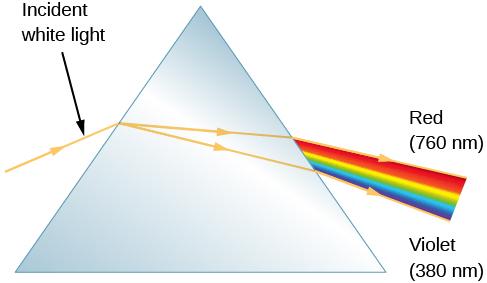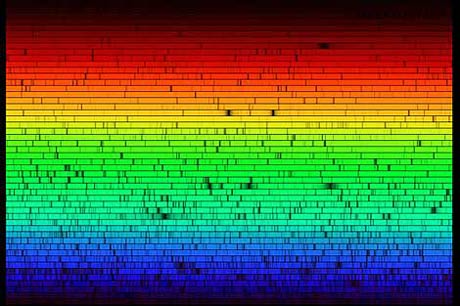Properties of Light
1. Newton
In 1672, in the first paper that he submitted to the Royal Society, Sir Isaac Newton described an experiment in which he permitted sunlight to pass through a small hole and then through a prism. Newton found that sunlight, which looks white to us, is actually made up of a mixture of all the colors of the rainbow.

This phenomenon is called dispersion and explains Newton’s rainbow experiment. This array of colors is a spectrum of light, the instrument used to disperse the light and form the spectrum is called a spectrometer.
2. Herschel
Astronomer William Herschel first discovered infrared in 1800 while trying to measure the temperatures of different colors of sunlight spread out into a spectrum. He noticed that when he accidently positioned his thermometer beyond the reddest color, it still registered heating due to some invisible energy coming from the Sun. This was the first hint about the existence of the other (invisible) bands of the electromagnetic spectrum, although it would take many decades for our full understanding to develop.

3. Ritter
In 1801, after hearing about the discovery of "heat rays" (infrared radiation) by William Herschel (in 1800), Ritter looked for an opposite (cooling) radiation at the other end of the visible spectrum. He did not find exactly what he expected to find, but after a series of attempts he noticed that silver chloride was transformed faster from white to black when it was placed at the dark region of the Sun's spectrum, close to its violet end. The "chemical rays" found by him were afterwards called ultraviolet radiation.
4. Fraunhofer
In 1814, Joseph Fraunhofer observed that the spectrum of the Sun shows dark lines crossing a continuous band of colors.

